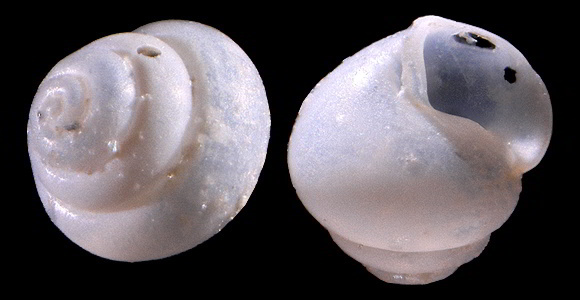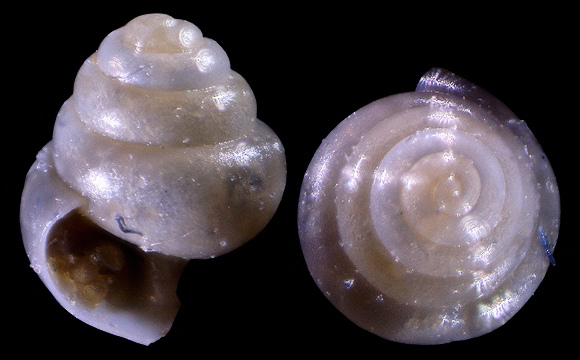
Epipelagic. Diurnal migrator.
Protonym: Fusus retroversus. Synonyms: alexandri, australis, balea, flemingii etc.
« Shell with five rounded whorls, well defined at the line of junction. These increase somewhat rapidly in size, and, being a little depressed, give to the shell what is termed a bellied appearance. The mouth is oblong, placed obliquely, and interrupted by the convexity of the body-whorl. The outer lip joins the body-whorl at an acute angle. The pillar is straight, and slightly scooped out at the apex for the canal, which is shallow, regular, and short. » – J. Fleming: “On a reversed species of Fusus”, Memoirs of the Wernerian Natural History Society vol. IV part II, Edinburgh 1823, p.499.
Above and below: 500m deep, off Alborán island. 1mm.
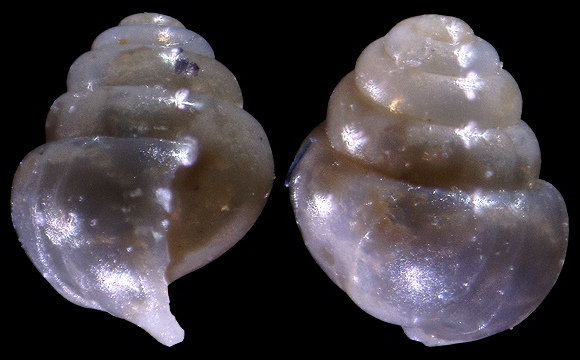
« The whole shell is smooth, glossy, and so transparent as to permit the pillar to be distinctly perceived throughout its whole length. The layers of growth are scarcely perceptible even when highly magnified. The whole shell scarcely exceeds a line in length. Three specimens of this shell have occurred to us in shell-sand from Noss Island, Zetland, which we collected after a storm in the spring of 1809. » – Ibid.
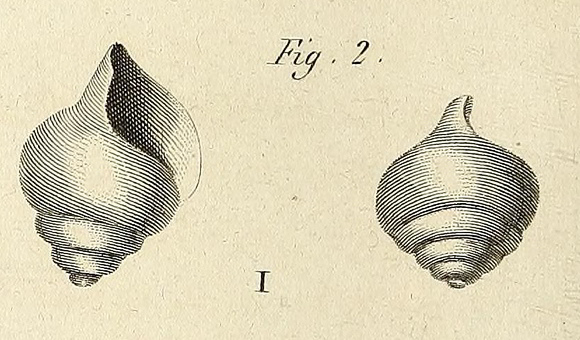
« None of the characters of this shell would lead us to consider it as the young of any of the larger species. The relative proportion of the different whorls, and their number, intimate that the shell is nearly at its full growth, or, at least, that it has assumed its true form. Had any doubts remained on this subject, we would not have offered the preceding description, as we are aware, that fry of several shells hold the rank of species in the systems of British conchologists. »
First drawing of the species, given by Fleming in addition to his article, plate XV.
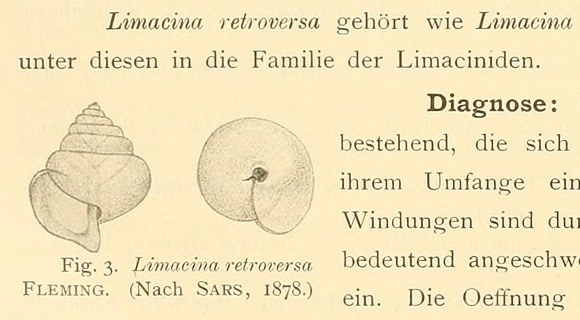
« Regarding the way of life we have some information from Agassiz (1866). Limacina retroversa comes, as probably all Thecosomes, only after the onset of twilight to the surface of the water and disappears again at 10 o’clock in the evening. During the day they are found only sporadically on the surface, they then stay in greater depths […] The food according to Boas consists essentially of protozoa (diatoms, foraminifera, flagellates, infusoria). » – op. cit. p.421.
